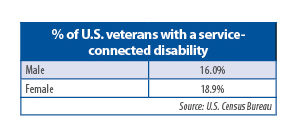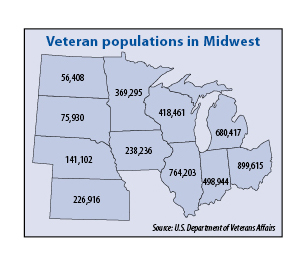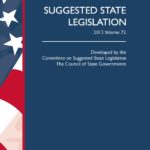By Rey Fuentes
On the 20th anniversary of the Americans with Disabilities, CSG released a comprehensive survey of state policy related to disabilities, featuring nearly 149 different entries from 31 states, in an effort to help spread awareness of these programs from across the nation. Challenges and issues facing disability are numerous. State and federal governments continue to struggle developing policies surrounding housing, employment, and independent living. This document seeks to provide policymakers with information on policies that they can pursue in their own states.
Download the Entire Report in PDF
Executive Summary:
July 26, 2010 marks the 20th anniversary of the Americans with Disabilities Act, what many consider to be one of the most sweeping movements toward advancing freedom, independence, and dignity since the Civil Rights Act of 1964. As long time policy advisor and crafter of the ADA, Bobby Silverstein sums up the comprehensive federal act saying that “it codified common sense and common courtesy. It basically says that people with disabilities should be treated with dignity and respect in the areas of employment, public accommodations, and services provided by state and local governments.”1
Yet the current state of disability policy in America is one of sobering statistics. As David Stapleton speaks to in his 2006 article, people with at least one disability are twice as likely to go unemployed than their counterparts with no disability2. In fact the average reported employment for persons with disabilities in the United States hovers around a meager 39%3. Match these statistics with a rapidly graying baby-boomer population, returning veterans from theatres of war overseas, growing numbers of diagnosed children with Autism Spectrum Disorders, seemingly endless Medicare waiting lists, increased demand for social services and health delivery options all of which are pressing on significant losses in revenue at the state and federal level, and you have a snapshot of disability policy in America that demands action.
Even after decades of legislative, judicial, and social progress, the intangible portions of the disability debate may be some of the most destructive. As Silverstein mentions, we must accept a “new emerging disability policy framework” that embraces “the precept that disability is a natural and normal part of the human experience that in no way diminishes a person’s right to participate fully in all aspects of society.”4 Many policy makers have been quick to accept this emerging approach by redefining their concept of disabilities, accepting “person first” disability language (i.e. “a person with a disability” versus “a disabled person”) and renaming state agencies and programs to reflect a shift away from archaic language (i.e. “retarded” or “handicapped”). Disabled historian Robert Weibe captures this shift in language by describing that, “The words we use to define problems, or to evaluate potential solutions to those problems, structure thinking by linking concrete situations to moral categories,” making advocates and policymakers responsible for changing the language of disability in tandem with changing the policy.5 Only then will there be a chance for society to accept that access and integration are not simply a series of legal and fiduciary obligations, but a matter of civil rights.
Fight for Progress
While setbacks are easy to focus on, successes must also be celebrated. Intel has now developed a portable assistive reading device that allows blind users to take a picture of any text document and have the information read aloud via an artificial voice. The non-profit organization “No Person Left Behind” focuses on independence for persons whose primary vehicle for transportation is electronic wheelchairs the chance to utilize 12 volt, solar powered assistive devices that free them from possible loss of power and subsequent immobilization. Indeed, as Marilyn J. Field and Alan M. Jette state, the “future of disability in America will depend on how this country prepares for and manages a complex array of demographic, fiscal, medical, technological, and other developments that will unfold in the next several decades.”6 Without a doubt, doubled efforts toward enhanced coordination, matched with innovation and perseverance, will be the hallmark of success in the arena of disability policy at the federal level and among the states.
While states have become leaders as well as responders to action related to disability policy, it still remains key to communicate and learn from one another. As Assistant U.S. Attorney General Thomas Perez commented during testimony to the Senate Health, Education, Labor and Pension Committee on the enforcement of Olmstead v. L.C., the landmark Supreme Court ruling requiring states to allow institutionalized patients to seek community-based care, states have long suffered from a “stove-piping” effect, having mixed responses to dealing with federal mandates and providing sufficient resources for individuals needing care when disability policy is left to innumerable state agencies and advocacy organizations.7 Better communication, along with strategies to fund new programs and mandates will be critical to ensuring the best possible environment for persons with disabilities.
Federal Response
In addition to state responsibilities, the federal government has been making progress in terms of disability policy. HR 3101, if passed by the Senate, will allow the Federal Communications Commission (FCC) to create new regulations for online video captioning services and provide for more accessible emergency management updates.8 Secretary Sebelius issued a letter to Governors to encourage them to voluntarily enroll in the expanded Money Follow the Person (MFP) program in an effort to fulfill commitments to community choice care options.9 And on this year of the 20th anniversary of the ADA, the Senate has the opportunity to ratify an international convention on disability to help expand human rights globally.10
Though the ADA, the Individuals with Disabilities Education Act (IDEA), Medicare, Medicaid, Money Follows the Person Demonstration Grants, Temporary Assistance for Needy Families (TANF) and Children Health Insurance Program, among many other policies, have changed the face of disability policy in the United States, the fight for equality, access, and civil rights continues unabated.
Advocates have a chance now to change the face of disability policy to realize full integration, empowerment, and respect. While system wide change must be made, policy-makers must constantly pursue and capture smaller victories that create the ripple effects toward tidal change. As Helen Keller is quoted in the beginning of this document, advocates and policymakers can achieve this “great and noble” goal through the smaller victories we continue to pursue.
State Action
What follows then is an illustrative sampling of state policy related to disabilities (nearly 149 different entries from 31 states), in an effort to help spread awareness of programs from across the country. In addition there is enclosed a selection of state programs and initiatives, descriptions of select federal policy and the primary source documents available to policymakers, legislators and advocates of all spectrums. What conclusions can be drawn from these state-based policy decisions and what direction might there be for a new decade of disability advocacy? Six themes, while not comprehensive or prescriptive, may be instructive to help move the policy debate forward:
1. Progress is progress, no matter how small: Many states have seen increased success in responding to issues surrounding disability. From name changes to specific state agencies (Idaho) to simply increasing fines for disability parking to fund programmatic enhancements (Washington & Oklahoma), or allowing American Sign Language to be applied as foreign language in post-secondary education (Kentucky); no policy change should be rendered insignificant.
2. Focus on community: For decades, disabilities meant exclusion and privation, but with cultural shifts in society at large and court rulings such as Olmstead v. L.C., institutional facilities are on track to be phased out of long-term care plans in many states in exchange for expected lower costs and greater community integration. From recognizing and certifying communities that offer the best environment for long-term care (Oklahoma) to enhanced funding for transition services such as moving companies, furniture, and groceries through Money Follow the Person Demonstration Grants (Virginia), states have recognized and codified movements toward greater community care.
3. Promotion and awareness: Going further than passing disability awareness months, or proclaiming a new state holiday, many states have taken steps to produce true awareness movements. Advocates can take part in online communities meant to spread awareness such as www.adaiowa.com (Iowa) or the Youth M.O.V.E. (Motivating Others through Voices of Experience) (Maryland). States have been able to more clearly identify and help citizens interact with people from various backgrounds and life-paths.
4. Gather Data: Predicting outcomes and evaluating the success of a policy in place requires robust sources of data. Programs that require state housing authorities to record the number of accessible homes available to persons with disabilities (Nevada) to programs that gather information on employment opportunities (Minnesota), data gathering must become commonplace in any new action taking place around the country. Only then will advocates and policymakers have the tools necessary to advance their cause.
5. Remember to Evaluate: Statutorily mandated annual reporting has been beneficial in synthesizing the massive amounts of information and actions taken by stakeholders, agencies, and policy-making bodies and further refining these efforts have given many states valuable tools to organize and effectively communicate successes as well as obstacles to the correct audiences (i.e. California and Florida’s statutorily mandated annual report).
6. Put power in the right place: Finding the right balance between advice and enforcement has been a delicate matter. Some states have relied extensively on advisory boards to produce information and recommendations, but Massachusetts’ Office on Disability, for example, places informal enforcement in the hands of its Executive Director to enforce specific rules, regulations, policies implemented by the state legislature. Increased enforcement powers and centralized agency enforcement has been an emerging trend as new requirements test state leadership.



